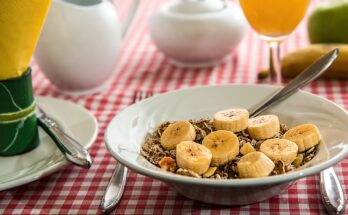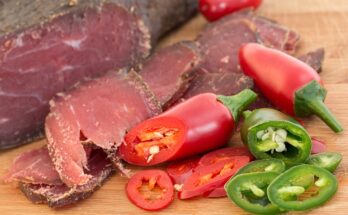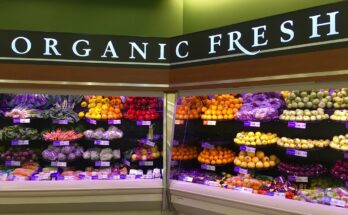Are you curious about the various methods used to process and preserve food? Look no further! In this comprehensive guide, we will walk you through the different types of food processing methods and their benefits.
First up is canning, a popular technique for preserving food for long-term storage. By sealing food in airtight containers, canning prevents spoilage and extends the shelf life of various products.
Next, we’ll explore freezing, a method that locks in freshness and nutrients. By rapidly lowering the temperature, freezing slows down the growth of bacteria and maintains the quality of food for an extended period.
Drying is another technique we’ll delve into, as it involves removing moisture from food to prevent spoilage and enhance shelf life. This method is commonly used for fruits, vegetables, and herbs.
Fermentation is a fascinating process that transforms ingredients using microorganisms. It not only adds unique flavors but also increases the nutritional value of certain foods.
Lastly, we’ll discuss pasteurization, a heat treatment method that ensures food safety by killing harmful bacteria. It is commonly used for dairy products, juices, and other beverages.
Ready to explore the world of food processing? Let’s dive in and discover the wonders of these different methods together!
Canning: Preserving Food for Long-Term Storage
Canning is a fantastic way to preserve food for long-term storage, making it last much longer. With this method, you can enjoy your favorite fruits, vegetables, and even meats all year round.
The process is simple and involves sealing food in airtight containers, such as glass jars, after they’ve been properly cooked. The heat kills any bacteria, yeasts, or molds present in the food, ensuring its safety and longevity.
This method not only extends the shelf life of food but also retains its flavor, texture, and nutritional value. Plus, it’s convenient! Once canned, you can store your food in a cool, dark place, and have it readily available whenever you need it.
So why not start canning today and enjoy the benefits of long-lasting, delicious food?
Freezing: Locking in Freshness and Nutrients
To preserve the freshness and nutrients of your food, freeze it and watch as the flavors and textures are locked in, transporting you to a crisp winter day.
Freezing is a popular food processing method that involves rapidly lowering the temperature of food to below its freezing point. This helps to slow down bacterial growth and enzymatic activity, preserving the quality of the food for a longer period of time.
Freezing is especially beneficial for fruits and vegetables, as it helps to retain their natural colors, flavors, and nutritional value. By freezing your food, you can enjoy the taste of summer even in the coldest months.
It’s important to properly package and label your frozen foods to prevent freezer burn and maintain their quality. Whether you’re freezing a batch of homemade soup or fresh berries, freezing is a convenient and effective way to lock in freshness and nutrients.
Drying: Removing Moisture for Extended Shelf Life
When you dry your food, you’ll be amazed at how its flavors intensify and its shelf life extends, evoking a sense of culinary exploration and anticipation.
Drying is a food processing method that involves removing moisture from food to prevent spoilage and extend its shelf life. By removing water, the growth of bacteria, yeast, and mold is inhibited, making dried foods less prone to spoilage.
Drying also concentrates the flavors of the food, making it more intense and delicious. There are different methods of drying, including air drying, sun drying, and using a food dehydrator. Each method has its own advantages and can be used for different types of food.
Dried fruits, vegetables, herbs, and meats are popular examples of dried foods that can be enjoyed throughout the year. So, get ready to savor the intensified flavors and enjoy the extended shelf life that drying brings to your culinary creations.
Fermentation: Transforming Ingredients with Microorganisms
Immerse yourself in the world of fermentation as microorganisms work their magic, transforming ordinary ingredients into extraordinary culinary delights.
Fermentation is a food processing method that has been used for centuries to preserve and enhance the flavors of various foods. It involves the introduction of beneficial bacteria, yeasts, or molds to ingredients, which break down sugars and produce acids, alcohols, and gases. This process not only extends the shelf life of food but also adds unique flavors and textures.

From tangy sauerkraut to rich sourdough bread, fermentation creates a wide range of delicious products. It can also improve digestibility and increase the nutritional value of food by enhancing the bioavailability of certain nutrients.
So, next time you enjoy a slice of cheese or a glass of wine, remember that fermentation is behind these delectable treats.
Pasteurization: Ensuring Safety through Heat Treatment
Experience the reassurance of pasteurization as it uses heat treatment to ensure the safety of your food.
Pasteurization is a food processing method that involves heating food to a specific temperature for a set period of time to kill harmful microorganisms. This process was named after Louis Pasteur, a French scientist who developed it in the 19th century.
By subjecting food to heat, pasteurization effectively destroys bacteria, viruses, and parasites that may be present, reducing the risk of foodborne illnesses. This method is commonly used for dairy products, such as milk and cheese, as well as juices, sauces, and other liquid foods.
Pasteurization not only ensures the safety of your food, but it also extends its shelf life, allowing you to enjoy it for a longer period of time.
So, rest assured that your food has undergone the necessary treatment to keep you healthy and satisfied.
Conclusion
So now you know all about the different types of food processing methods! From canning to freezing, drying to fermentation, and pasteurization, each method plays a crucial role in preserving and transforming our food.
By understanding these techniques, you can make informed decisions about the food you eat and how it’s processed. Whether you’re looking to store food for a long time or enjoy it at its freshest, there’s a method for you.
So go ahead and explore the world of food processing!




